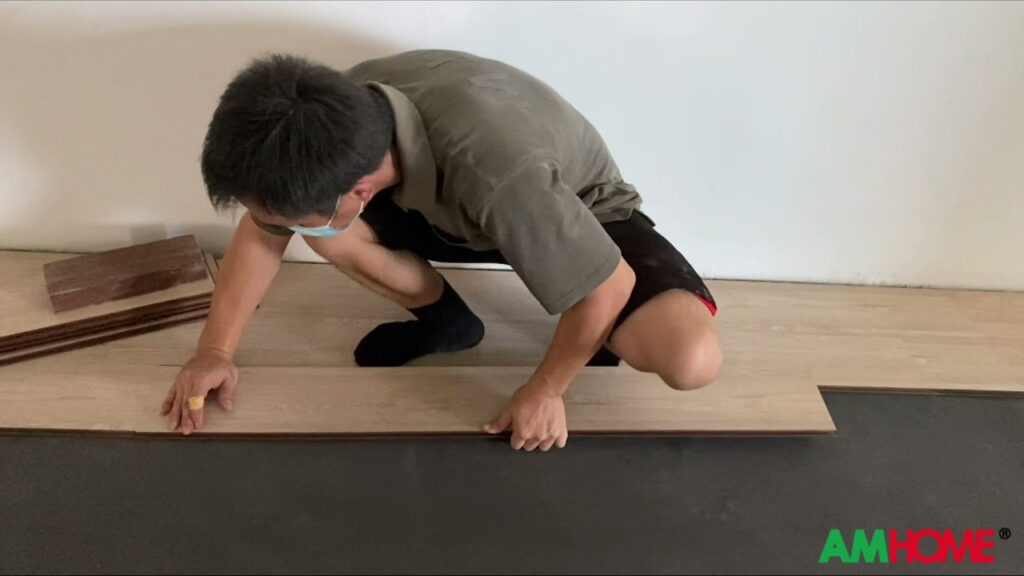The Benefits of Choosing Natural Linoleum Flooring
Renewable and Sustainable Material
Natural linoleum flooring is a popular choice for eco-conscious consumers due to its renewable and sustainable nature. Made from natural materials such as linseed oil, pine rosin, wood flour, and jute, this type of flooring is biodegradable and has minimal environmental impact compared to synthetic alternatives.
Durable and Long-Lasting
One of the key benefits of natural linoleum flooring is its durability and long lifespan. This type of flooring is known for its resilience and can withstand heavy foot traffic, making it a practical choice for both residential and commercial spaces. Natural linoleum flooring is often hailed for its ability to maintain its appearance over time, reducing the need for frequent replacements.
Hypoallergenic and Easy to Maintain
Natural linoleum flooring is a preferred option for allergy sufferers due to its hypoallergenic properties. It does not trap dust, pet dander, or other allergens, making it easier to maintain a clean and healthy indoor environment. Additionally, this type of flooring is low maintenance and can be easily cleaned with mild soap and water, requiring minimal effort for upkeep.
Wide Range of Colors and Designs
In addition to its practical benefits, natural linoleum flooring offers a wide range of colors and designs, providing versatility and flexibility in interior design choices. Whether you prefer a classic, timeless look or a more contemporary aesthetic, there are numerous options available to suit various preferences and styles.
Comparing Natural Linoleum to Other Flooring Materials
When it comes to choosing the right flooring material for your home or commercial space, natural linoleum stands out as a sustainable, durable, and versatile option. This eco-friendly flooring is made from natural materials such as linseed oil, pine rosin, wood flour, cork dust, and pigments. Its composition makes it biodegradable and non-toxic, contributing to healthier indoor environments.
In comparison to vinyl flooring, natural linoleum offers a more environmentally friendly choice. Unlike vinyl, which is made from synthetic and non-renewable materials, natural linoleum is produced from renewable resources and has a lower environmental impact. Additionally, natural linoleum is known for its durability and long lifespan, making it a cost-effective flooring option in the long run.
When comparing natural linoleum to hardwood flooring, the former offers a more sustainable choice. While hardwood flooring requires the harvesting of trees and often leads to deforestation, natural linoleum is made from rapidly renewable materials without causing harm to forests. Furthermore, natural linoleum is resilient to water and moisture, making it a suitable option for areas prone to high humidity or spills.
In contrast to ceramic tile, natural linoleum provides a softer and more comfortable underfoot feel. Additionally, natural linoleum is warmer and quieter compared to tile, offering a more welcoming and cozy ambiance in interior spaces. With its versatile design options and sustainable characteristics, natural linoleum emerges as a compelling choice when seeking an environmentally conscious and durable flooring material.
Tips for Installing and Maintaining Natural Linoleum Flooring
1. Proper Installation
Installing natural linoleum flooring requires attention to detail. It’s essential to ensure that the subfloor is clean, level, and dry before installation. Additionally, acclimating the flooring to the room’s temperature and humidity levels is crucial to prevent buckling or warping.
2. Regular Cleaning
Maintaining natural linoleum flooring involves regular cleaning to preserve its natural beauty and longevity. Use a pH-neutral cleaner and a damp mop to remove dirt and stains. Avoid harsh chemicals and excessive water, as they can damage the linoleum’s surface.
3. Preventive Maintenance
To prevent scratches and dents, place felt pads under furniture legs and use protective mats in high-traffic areas. Furthermore, avoid exposing the flooring to direct sunlight for prolonged periods, as it can cause discoloration. Regularly inspect seams and edges for any signs of wear or damage.
4. Refinishing
Natural linoleum flooring can be refinished to restore its luster and refresh its appearance. Depending on the wear and tear, a professional refinishing or resealing may be necessary to maintain the flooring’s resilience and durability. Always follow the manufacturer’s guidelines for proper refinishing techniques.
These tips will help ensure the successful installation and long-term maintenance of natural linoleum flooring, preserving its eco-friendly and sustainable qualities for years to come.
Exploring Trendy Designs and Colors in Natural Linoleum
Natural linoleum has seen a surge in popularity due to its eco-friendly and sustainable characteristics. Designers are increasingly drawn towards exploring trendy designs and colors in natural linoleum to create unique and visually appealing spaces. From classic neutrals to vibrant hues, the color palette for linoleum has expanded to accommodate diverse design preferences. The interplay of textures and patterns in linoleum flooring further opens up avenues for innovative and stylish interior design solutions.
When it comes to trendy designs, geometric patterns have made a notable impact in the world of natural linoleum. Bold and intricate geometric designs add an element of modernity and sophistication to any space, making them a popular choice among interior designers and homeowners alike. Additionally, the resurgence of retro and vintage-inspired designs has brought about a refreshing twist to the linoleum market, offering a blend of nostalgia and contemporary aesthetics.
The versatile nature of natural linoleum allows for a multitude of creative possibilities, enabling designers to experiment with unconventional color combinations. From soft pastels to deep jewel tones, the spectrum of colors available in natural linoleum provides endless opportunities to infuse personality and character into interior spaces. Furthermore, the growing emphasis on biophilic design has spurred the development of linoleum designs that mimic natural elements such as stone, wood, and organic textures, catering to the demand for nature-inspired aesthetics.
Incorporating trendy designs and colors in natural linoleum presents an exciting prospect for interior design enthusiasts seeking sustainable yet stylish flooring solutions. As the design landscape continues to evolve, natural linoleum stands as a versatile canvas for expressing creativity and imagination, making it a compelling choice for contemporary design projects.
Environmental Impact of Natural Linoleum Flooring
Natural linoleum flooring is gaining popularity as a sustainable and environmentally friendly flooring option. Made from renewable materials such as linseed oil, cork dust, wood flour, and tree resins, natural linoleum flooring offers a significantly lower environmental impact compared to traditional vinyl flooring. Its production involves fewer harmful chemicals and petroleum-based materials, making it a greener choice for eco-conscious consumers.
Furthermore, natural linoleum flooring is biodegradable and emits minimal volatile organic compounds (VOCs), contributing to better indoor air quality. Its long lifespan and durability also reduce the need for frequent replacements, further minimizing its environmental impact over time. By choosing natural linoleum flooring, homeowners can contribute to the preservation of natural resources and reduce their carbon footprint while enjoying a stylish and sustainable flooring option for their spaces.
In addition to its eco-friendly attributes, natural linoleum flooring comes in a variety of colors and designs, providing homeowners with the opportunity to enhance their living spaces while making environmentally responsible choices. Whether it’s for residential or commercial use, natural linoleum flooring offers a perfect blend of aesthetic appeal and environmental sustainability, making it a sought-after choice for eco-conscious consumers and businesses.


